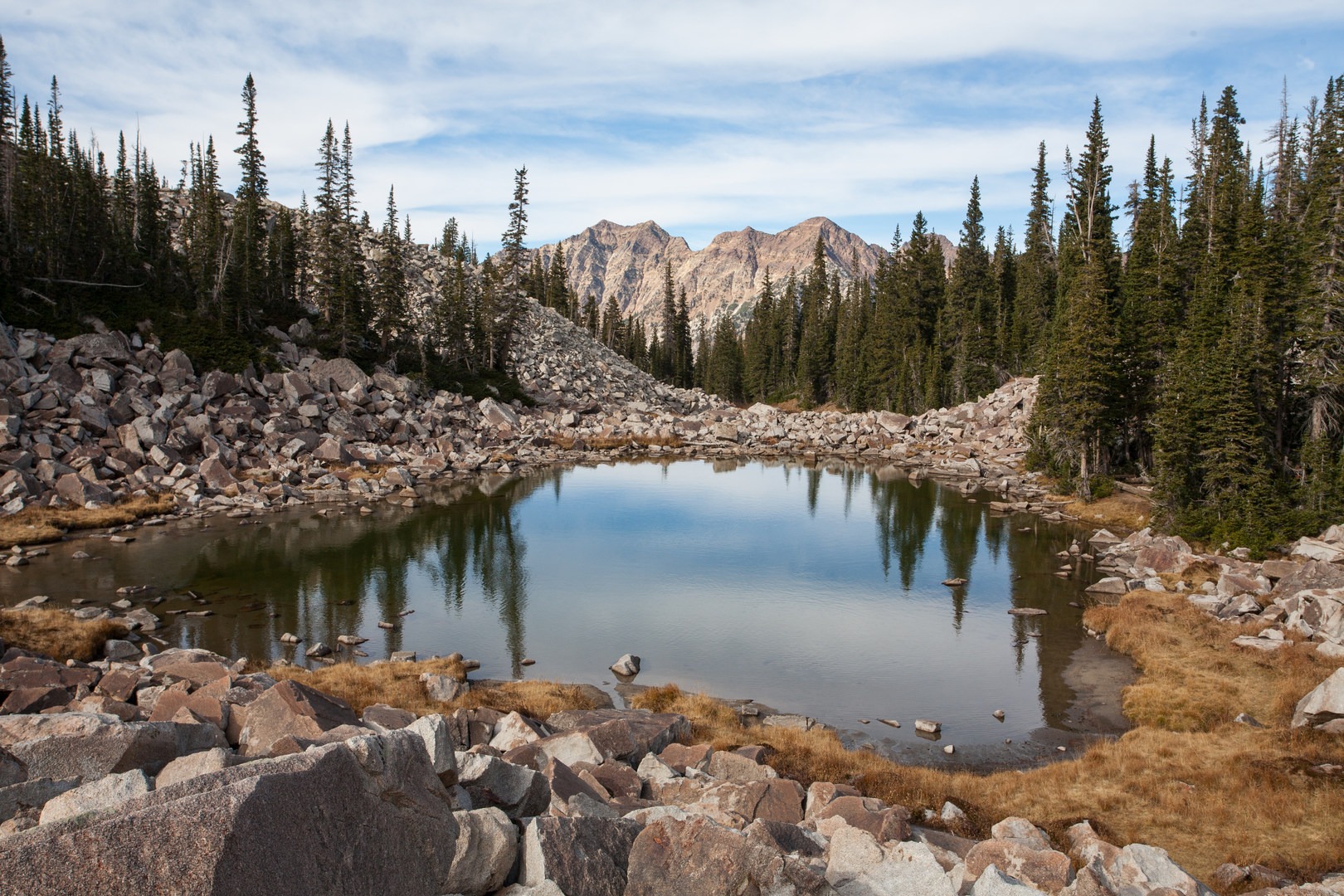You are here
The first of what would eventually become four official wilderness areas near the greater Salt Lake City, the Lone Peak Wilderness was formed in 1978. It is by far the largest of the four and preceded the other three by six years. The 30,000-acre enclave stretches from Little Cottonwood Canyon Road to the north and American Fork Canyon Road to its south. The area is clearly visible from most of the Salt Lake Valley with the 11,253-foot Lone Peak and sitting out front and above the others. With more waterfalls than the Olympus or Twin Peaks wilderness areas, this is a great place to enjoy an otherwise rare treat in the central Wasatch. Winter does not slow down people's enthusiasm for the Lone Peak area, and many consider winter their favorite season to enjoy it. Along with vibrant wildflowers in summer and beautiful yellow aspen and red maples in autumn, this truly is a year-round destination.
The Red Pine Trail is not only a beautiful alpine lake destination hike. it is commonly used to access the Pfeifferhorn, also known as the Little Matternhorn, a regular place for peak baggers to catch the sunrise. The Maybird Lakes are yet another fantastic fork from the productive Red Pine Trail. One beautiful trail that just sneaks into the eastern edge of the enclave is American Fork Canyon's Silver Lake, which sits on the opposite side of White Baldy and Pfeifferhorn. For those who love to visit waterfalls in the spring and early summer, there are a bunch of great options along with some of the most beloved in town. Secret Falls is a short bushwhack off of Red Pine, and Bells Canyon Waterfall has become one of the most popular trails in Salt Lake because you don't even need to drive up a long canyon road to reach the trailhead.
Further south is another large waterfall in Utah County up Dry Creek Canyon named Horsetail Falls. This is a steep and fun trail to a stunning view of the town of Alpine and Utah Lake below and one of the largest cascades in northern Utah. The trailheads for Lake Hardy, Phelps Canyon and Jacobs Ladder (which takes you up to Lone Peak itself) are all located not far from Dry Creek in the southwestern edge of the wilderness. Across the other side of the crest is Deer Creek Trail, which comes in from the southeast and links up to Dry Creek Trail. The Utah County end of the wilderness really has some serious trails for experienced hikers; many of them have 1,000 feet of change for each mile hiked over the course of 4 to 6 miles each way. This is a great way to seperate yourself from the crowds and enjoy a true wilderness area close to home.
The 46 miles of summer trails are enjoyed on snowshoes in the winter, and their peaks are lapped by backcountry skiers well into early summer. This wilderness area is particularly rugged and steep and displays a diverse geology with sedimentary, metamorphic, and igneous rock formations. The wide array wildlife provides sightings of moose, deer, marmot, hawk and the occasional mountain goat. Backcountry campers love to frequent the meadows, and many bring their poles to pass the time doing some fishing for small trout. Make sure to consult the regulations before doing any Leave No Trace backpacking in the Lone Peak Wilderness.
Logistics + Planning
Current Weather: Powered by Dark Sky






























Comments
Sign In and share them.